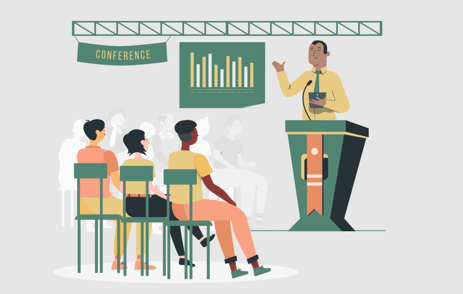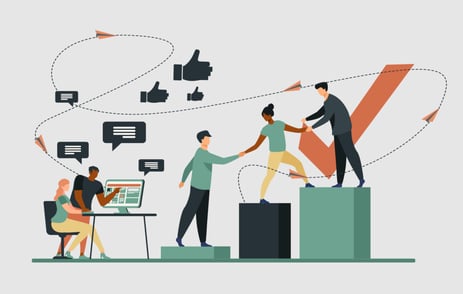The pandemic spurred digital acceleration to new heights, with global online customer interactions surging from 36% in December 2019 to 58% just seven months later. That meant a drastic change in the way organizations everywhere conduct business. From the shift to remote work to the switch to online events, it was a turbulent time, to say the least.
We’ve seen a lot of groundbreaking event technology developments over the past few years, and we’re here to explain how a handful of them can help bring your association’s events to new heights – whether it’s in-person or hybrid.
Digital Signage
Digital signage is nothing new in the event space, but social distancing measures and changing event dynamics have allowed it to step back into the spotlight. Guide event participants to their next destination, share real-time announcements and make your advertising efforts bolder than ever before with digital signage.
Facial Recognition
Facial recognition technology: everyone knows it’s used for smartphone security measures, but it’s also become commonplace for border checks and police investigations. As the technology becomes more accessible, it’s being introduced in contexts where security isn’t necessarily a primary concern, including association events.
With facial recognition, event attendees can enjoy fast and convenient check-ins, track the booths they visit and receive automated emails, printed badges, and goodie bags.
For your team, security will not only be easier to monitor, but you’ll also be able to collect more accurate event data, avoid wasting resources on no-shows and better control crowd flow and access points.
Projection Mapping
Are you looking for an easy engagement tactic that can transform your event space instantly? Say hello to projection mapping, a simple way to present, advertise and make the most of whatever flex space you have on hand. Projection mapping is a form of augmented reality technology that allows you to project images on any surface.
Event planners can use this technology to display ads, interactive displays, conference hall maps or anything else they choose. The sky's the limit when it comes to projection mapping, and it doesn’t require complex assembly or physical screens to operate.
Geofencing
Essentially, geofencing creates a virtual fence around a designated area. Upon entering the geofenced area, event attendees will automatically receive customized push notifications, event check-in information, social distancing cautions, or any other information you choose. Within your event venue, geofencing can also be a real game-changer for managing crowd flow.
Second Screen Technology
Let’s face it — most of us go about our days with our heads buried in our phones. Whether we’re catching up on work emails or trying to solve the daily Wordle, this habit can, unfortunately, detract focus from the world around us.
Second screen technology is a way to engage event attendees without completely rewiring their habits. Examples include using smartphones or tablets to participate in polls, take notes, or interact with a presentation by following links, zooming in on graphics, or bookmarking videos.
Wearable Tech
In order to boost engagement, event planners should also be looking at the habits and tech your attendees already possess – one of the biggest ones being wearable tech. Making cashless purchases and accessing certain event areas are a breeze with wristbands and smart badges. You can even use this tool to track COVID-19 cases.
Increasing audience engagement and connections through wearable tech is now easier than ever before. Just look to Hilton America’s 2017 Leadership Conference as an example, where the company incentivized attendees to exchange contact information and saw remarkable results.
Bringing Modern Technology to Your Events
When you bring your events into the 21st century, you can maximize your impact while delivering value to your members. These examples of up-and-coming event technology will help streamline event processes, heighten security, and — perhaps best of all — make your events more productive and engaging, encouraging higher attendance numbers.

April 19, 2022


